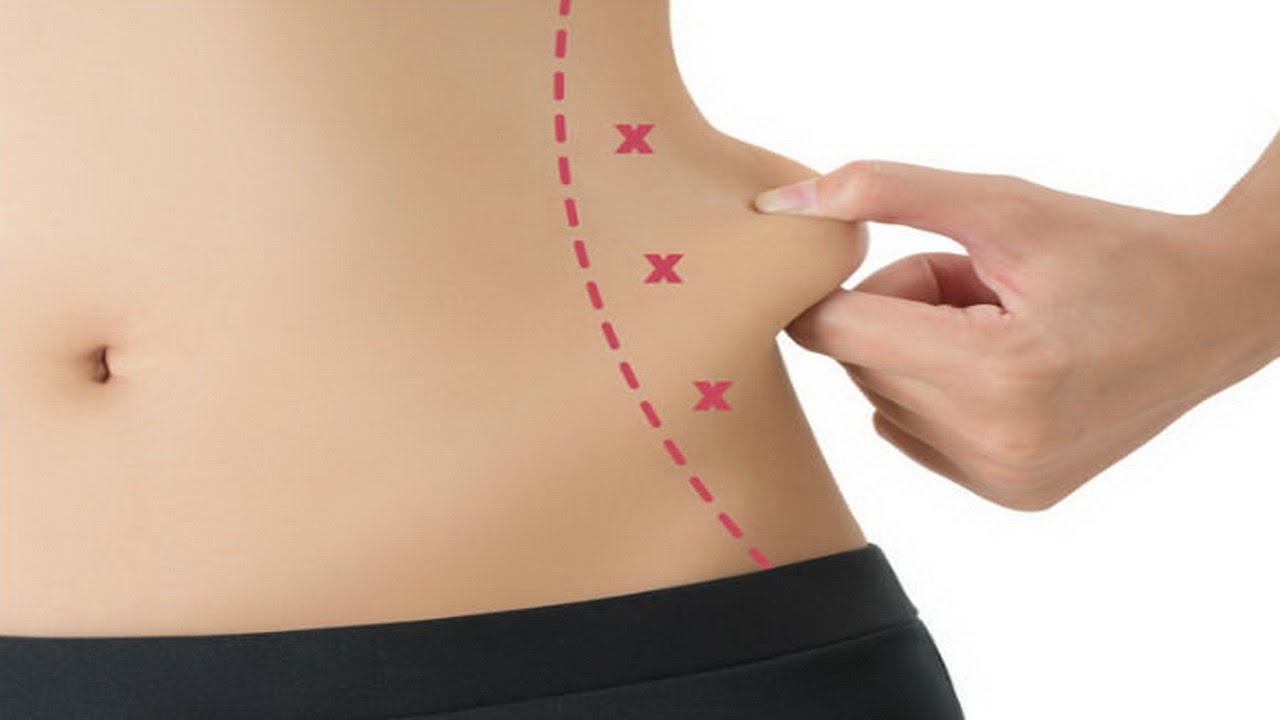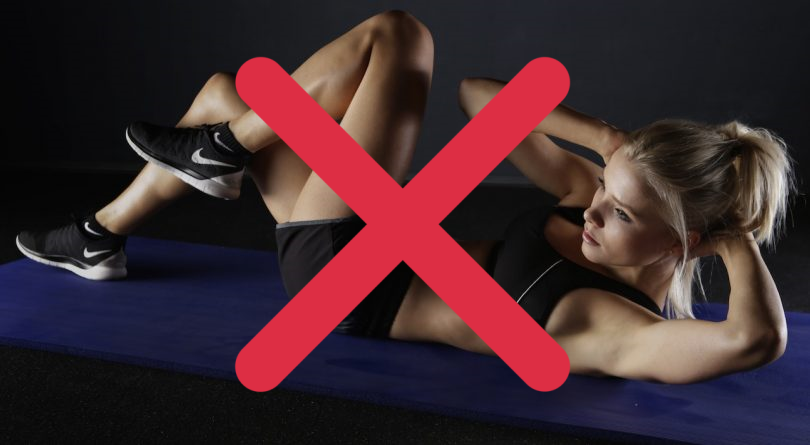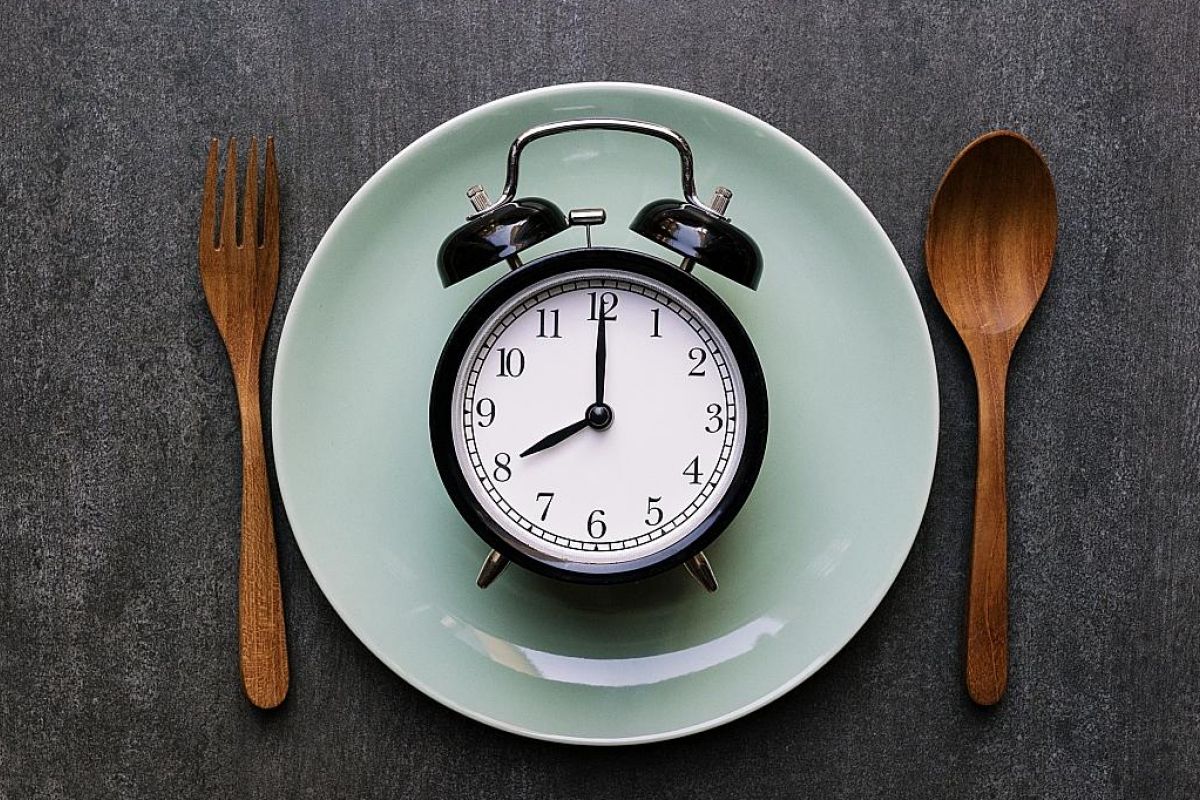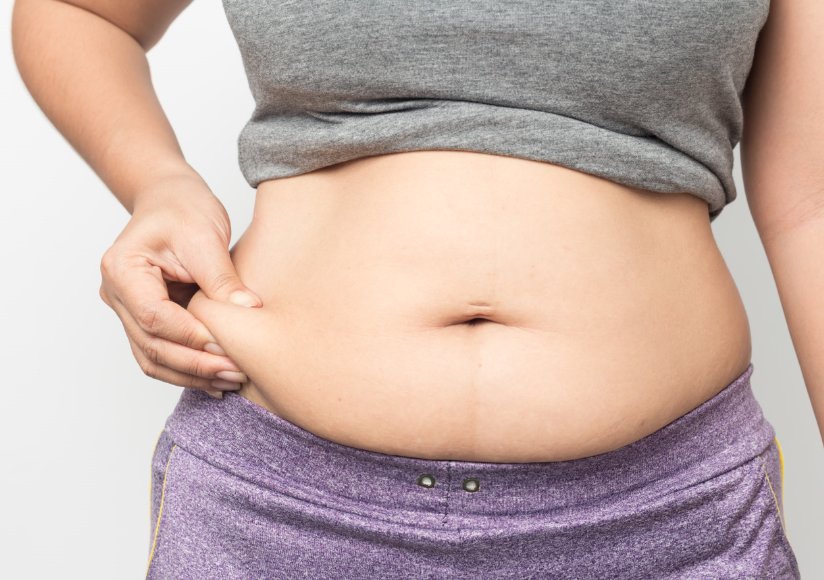Belly fat is beyond frustrating. Most often this frustration is directed at that darned muffin top that prevents us from feeling and looking our best in our favorite skinny jeans. But, in reality, the consequences of belly fat run much deeper than the way our clothing fits.
When the fat in your stomach expands and grows around the organs, your health could be at risk. This visceral fat increases your production of the stress hormone cortisol and inflammatory substances known as cytokines that impact your body’s production of insulin. Carrying extra fat in your belly could increase your risk of getting type 2 diabetes and heart disease!
It is time to improve your health (and the fit of your jeans) by banishing belly fat once and for all!
Although there’s no quick way to achieve spot reduction, both diet and exercise play a vital role in overall weight loss, which is the best way to get rid of belly fat. We had a few experts weigh in on their best tips for overall weight loss, thereby getting rid of the excess weight in our midsections.
What Causes Belly Fat?

One of the most common causes of belly fat is simply eating too much and moving too little. Over time, we often become more sedentary. We spend less time walking, taking the stairs and exercising. When we eat more calories than we burn each day, an energy imbalance causes weight gain. But there are other causes of belly fat, too.
As we age, our metabolism naturally slows down, and total body fat gradually increases. Women tend to gain a higher fat percentage than men as they get older. Body fat distribution changes in menopause, which causes more fat to be directed to your abdomen.
Heredity can also be a factor. You might be genetically predisposed to gain weight in your middle more than other parts of your body. Hormones and hormonal changes, as well as stress, can also affect belly fat accumulation.
Why Is Belly Fat a Problem?
If you carry too much fat around your waist, you are more likely to develop health problems than if you carry fat mainly in your hips and thighs. Belly fat can significantly increase your chances of developing a number of serious health issues, including:
- Heart disease
- Breast cancer
- Diabetes
- Gallbladder problems
- High blood pressure
Understanding the importance of belly fat and the risks associated with a bigger midsection may help you to start a program to get rid of your belly fat.
How to get rid of belly fat quickly and safely
If you’re serious about banishing belly fat and improving your health, surviving on salad and hitting the treadmill for hours on end is a miserable (and highly inefficient) way to go about it.
Here’s how to scorch your belly fat in 10 easy steps:
1. Dial up your metabolism

Increased activity fires up your metabolism and burns more calories. As a health tip, this one’s probably obvious to just about everyone. Try pushing your exercise into a higher intensity workout. It fires up your resting metabolism the most, according to WebMD.com. Consider other small changes during the day that can help. For example, when you get a phone call, stand up rather than staying seated. According to the American College of Sports Medicine, a 150 pound person burns 72 calories an hour sitting and 129 calories an hour standing. Walking around the office while you talk increases the total to 143 calories an hour.
Making small changes to increase your metabolism can positively affect your well-being. Spending time in your hot tub is another. It’s part of a holistic approach to wellness with significant positive benefits. Just 20 minutes a day can help you reduce stress, improve weight loss, increase flexibility and circulation, promote muscle recovery and improve sleep.
2. Track Your Food Intake and Exercise

Many things can help you lose weight and belly fat, but consuming fewer calories than your body needs for weight maintenance is key.
Pro Tip: Use our TDEE calculator to know the exact amount of calories and macros you need to eat to successfully lose weight.
Keeping a food diary or using an online food tracker or app can help you monitor your calorie intake. This strategy has been shown to be beneficial for weight loss.
In addition, food-tracking tools help you see your intake of protein, carbs, fiber and micronutrients. Many also allow you to record your exercise and physical activity.
3. Cut Back on Carbs, Especially Refined Carbs

Reducing your carb intake can be very beneficial for losing fat, including abdominal fat.
Diets with under 50 grams of carbs per day cause belly fat loss in overweight people, those at risk of type 2 diabetes and women with polycystic ovary syndrome (PCOS).
Pro Tip: If you are looking to try Ketogenic Diet but don’t know where to start, try our simple Keto calculator to learn everything you need to know to get you started.
You don’t have to follow a strict low-carb diet. Some research suggests that simply replacing refined carbs with unprocessed starchy carbs may improve metabolic health and reduce belly fat.
In the famous Framingham Heart Study, people with the highest consumption of whole grains were 17% less likely to have excess abdominal fat than those who consumed diets high in refined grains.
4. Eat protein like a boss

Protein may be the key to a slimmer you. Here’s why: “Your body starts to produce more insulin as you age, since your muscle and fat cells aren’t responding to it properly,” explains Louis Aronne, MD, Director of the Obesity Clinic at Cornell. Insulin promotes fat storage — especially around the middle. A high protein diet may help protect you against insulin resistance. One study has shown that obese women who followed a diet for 8 weeks that consisted of roughly 30% protein, 40% carbs, and 30% fat lost more fat — including visceral fat, than women who ate a diet that was 16% protein, 55% carbs, and 26% fat.
Prioritize lean protein like beef, turkey, eggs, fish, chicken, and tofu. In a study published in the International Journal of Obesity, participants were either assigned a 12 per cent or 25 per cent protein diet. While the first group lost 11 pounds on average, the high-protein participants shed around 20 pounds and ditched twice as much belly fat as the low-protein subjects.
5. Do Fewer Ab Exercises

Ab exercises may be the least important thing you do to lose weight from your midsection, although strengthening your abs is just as important as working on the other muscles in your body. The key to losing belly fat, however, is more about burning more calories than you eat and letting your body respond to that.
When you do work your abs, treat them like any other muscle group. Challenge them with a few well-chosen exercises, perform two to three sets of 10 to 16 reps, and give rest a day between workouts.
Don’t forget, some whole-body exercises work your abs while targeting other muscles, which save time and makes your workouts more functional.
6. Perform Resistance Training (Lift Weights)

Resistance training, also known as weight lifting or strength training, is important for preserving and gaining muscle mass.
Based on studies in people with pre-diabetes, type 2 diabetes and fatty liver disease, resistance training may also be beneficial for belly fat loss.
In fact, one study in overweight teenagers showed that a combination of strength training and aerobic exercise led to the greatest decrease in visceral fat.
If you decide to start lifting weights, it’s a good idea to get advice from a certified personal trainer.
7. Drink in Moderation

Moderate wine consumption may provide some health benefits. One possible benefit is a smaller waist circumference.
In one study, researchers found that moderate wine drinkers show the lowest accumulation of ab fat among drinkers. Liquor drinkers and people who drink infrequently, but heavily, have the most abdominal fat.
If you don’t drink, that doesn’t mean you should start. Alcohol adds extra calories to your diet, so cutting it out can help with weight loss.
If you do drink, however, this is a good time to assess your habits. Drinking wine, in moderation, may serve you better than hard liquor, especially if you’re watching your weight. Remember to always drink responsibly.
[Related Reading: The Alcohol Guide: How to drink and still lose weight]
8. Try Intermittent Fasting

Intermittent fasting has recently become very popular for weight loss.
It’s an eating pattern that cycles between periods of eating and periods of fasting.
One popular method involves 24-hour fasts once or twice a week. Another consists of fasting every day for 16 hours and eating all your food within an 8 hour period (Leangains protocol).
Pro Tip: You can use our Intermittent Fasting calculator to figure out your meal, macros, training timings and supplementation details quickly.
In a review of studies on intermittent fasting and alternate-day fasting, people experienced a 4–7% decrease in abdominal fat within 6–24 weeks.
9. Say goodbye to stress

Stress can make you gain belly fat by triggering the adrenal glands to produce cortisol, also known as the stress hormone.
Research shows that high cortisol levels increase appetite and drive abdominal fat storage.
What’s more, women who already have a large waist tend to produce more cortisol in response to stress. Increased cortisol further adds to fat gain around the middle .
To help reduce belly fat, engage in pleasurable activities that relieve stress. Practicing yoga or meditation can be effective methods.
10. Get Plenty of Sleep

Sleep is important for many aspects of your health, including weight. Studies show that people who don’t get enough sleep tend to gain more weight, which may include belly fat.
A 16-year study in more than 68,000 women found that those who slept less than five hours per night were significantly more likely to gain weight than those who slept seven hours or more per night.
The condition known as sleep apnea, where breathing stops intermittently during the night, has also been linked to excess visceral fat.
In addition to sleeping at least seven hours per night, make sure you’re getting sufficient quality sleep.


